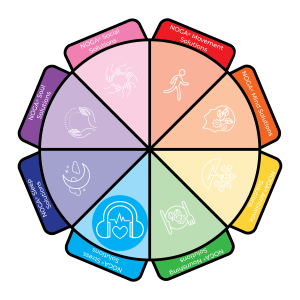Resourcing For Safety And Stability 2
 As I mentioned in the previous article, January 5th, be”H, I will be presenting with my colleague Rozi Wax at the NEFESH Conference in Parsippany, NJ. (Find out more here: https://nefesh.org/register/conference25) Our talk, “Resourcing Your Clients A Multiple Modality Toolbox For Early Trauma Work,” will be a survey of tools and techniques from various modalities that help calm our clients. A person does not need to be “traumatized” to use these very practical and helpful tools.
As I mentioned in the previous article, January 5th, be”H, I will be presenting with my colleague Rozi Wax at the NEFESH Conference in Parsippany, NJ. (Find out more here: https://nefesh.org/register/conference25) Our talk, “Resourcing Your Clients A Multiple Modality Toolbox For Early Trauma Work,” will be a survey of tools and techniques from various modalities that help calm our clients. A person does not need to be “traumatized” to use these very practical and helpful tools.
In this installment, I would like to share two of my favorite techniques that anyone can learn. Each of these is brief and once it is practiced sufficiently, it can be like your own “ER” (Emergency Relief) helpful in the moment of the challenge. Practiced regularly, any of the tools you learn become available when you need them. My rule of thumb is to practice them regularly when you do not need them, so that when you do need them, they will be available to you. As my slogan goes, “Attend to the need before it occurs; anticipate the problem before it happens.”
Additionally, I like to provide my clients with a very hefty toolkit so as they practice the various tools, they’re able to know which one to use in the moment. Tools can be in various forms and formats. There are activities including writing, speaking, self-soothing, distraction, etc. We use audio, video, or sensory inputs and the exercises may be in the form of relaxation, meditation, soothing touch, grounding, ego strengthening, and more. Here I will share only two of my signature techniques. In upcoming installments, I hope to share more. You may recall, we have shared some of these tools before.
Conscious or Controlled Breathing is one of the quickest and easiest ways to calm down before bedtime, before or during a stressful situation, or basically anytime of the day. These three exercises are similar, in that they use a basic breathing principle, “Inhale through the nose, and slow down the exhale.” Here are two favorites that I developed for my clients:
My Basic Breathing for Beginners™ – (CLICK HERE to download)
- Close your mouth 😉
- Inhale through your nose.
- Slow it down.
- Exhale longer
My Breathing Contest™ (CLICK HERE to read)
In The Breathing Contest™, we inhale through the nose, gently exhale through the mouth, exhaling longer than we inhale. We try to get into a rhythm that’s comfortable and not pressed or stressed, trying to exhale if it’s comfortable, without even concerning ourselves with the inhale. If we find that we could exhale longer than we are already doing, we may need to inhale for another second or two. If you can, it may give you the ability to length your exhale further. The slow, relaxed inhalation through the nose, followed by the slower exhale through the small, pursed mouth hole is called a “breath cycle.” Get into a comfortable rhythm with the above parameters as you find a comfortable breath cycle. Repeat it for a minute or two. Remember your “score” since you are having a ”contest” with yourself. The next time you do this exercise, you pick up where you were. Let’s say, you were able to get into a cycle of “3-6” (three seconds on the nasal inhale, and six on the pursed mouth exhale) the next time practicing this, try for 3-7, or 4-7. However, this is for your benefit and never should be done in a “stressful manner” that exceeds your “edge.” As we said, develop a comfortable breath cycle.
Here are some resources from my website. Wishing you only health as you learn and practice your techniques.
CLICK HERE to read More On Breathing & Some Exciting News!!!!
CLICK HERE to read Watch Your Breath
CLICK HERE for the meme “Remember Your Breath”
CLICK HERE for “3 Square Breathing”
We love hearing from you, please feel free to leave your comments below.
With Gratitude,
Rus Devorah


